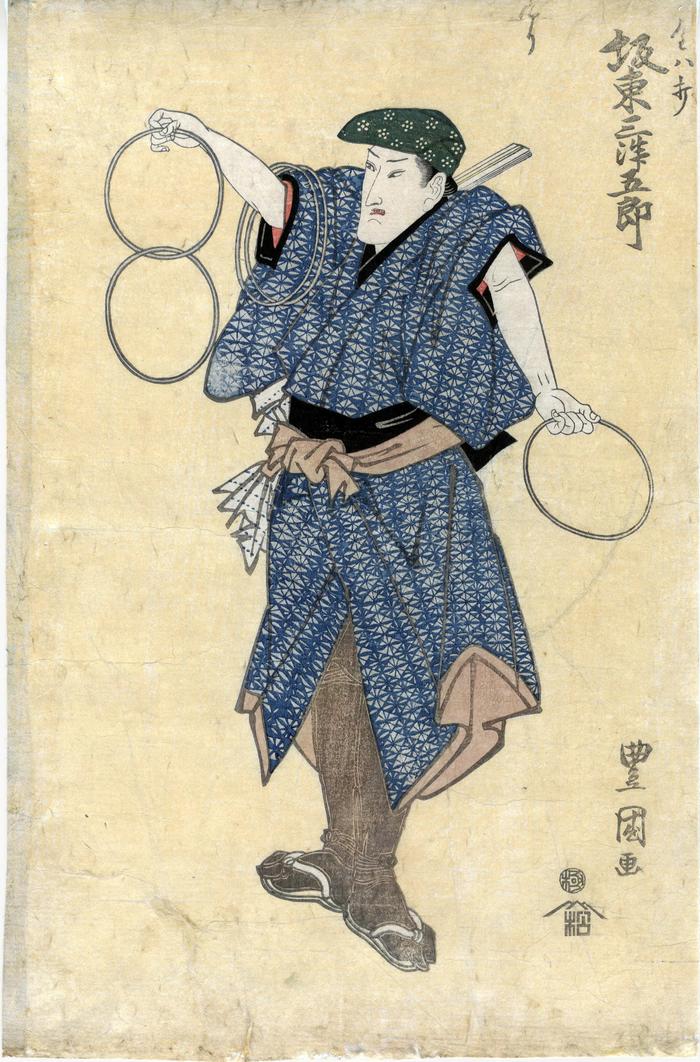Utagawa Toyokuni I (初代歌川豊国) (artist 1769 – 02/24/1825)
Bandō Mitsugorō III (坂東三津五郎) as an Edo magician (手妻江戸蔵) - performing the linking rings as 金は打
04/06/1818
10 in x 15 in (Overall dimensions) woodblock print
Signed: Toyokuni ga (豊国画)
Publisher: Matsumura Tatsuemon
(Marks 311 - seal 02-040)
Censor's seal: kiwame
Waseda University
Waseda University - a different image by Yamamotoya Heikichi of this actor in this role
Indianapolis Museum of Art - a Kunisada print of Sawamura Gennosuke from Chūshingura, Act 8, Jōruri
Waseda University - another version by Kunisada dated 5/9/1830 This print represents a performance of Banzui Chōbei shōjin manaita (幡随長兵衛精進爼板 - 'Banzui Chōbei's Vegetarian Chopping Block') by Sakurada Jisuke I at Nakamura Theater in 1818. It was first performed at the Nakamura-za in Edo in August,1803. Banzui was an otokodate.
Waseda University has 7 different prints by Toyokuni I, including this one, from this particular performance.
As of August 2014 we have yet to resolve the relevance of this figure with the rings with the play mentioned above. However, Samuel P. Leiter did note that "In the original production, Matsumoto Kōshirō V played Chōbei, Nakayama Tomisaburō was Komurasaki, and Bandō Mitsugorō III acted Gonpachi." Perhaps this represents a point in that play where Gonpachi is in disguise.
****
Above is a link to a Kunisada print of a fellow with rings in the Indianapolis Museum of Art. They link theirs to the Chūshingura - clearly noted in kanji at the top right, but as yet we don't know why. Perhaps this is a standard jōruri interlude between acts. The costuming is basically the same, but theirs has a landscape background, unlike the one here in the Lyon Collection.
****
There are two words in Japanese for magicians, conjurers and illusionists: tejina (手品) and tezuma (手妻).
Bandō Mitsugorō III (三代目坂東三津五郎: 11/1799 to 12/1831) (actor)
actor prints (yakusha-e - 役者絵) (genre)
Matsumura Tatsuemon (松村辰右衛門) (publisher)
Chūshingura (忠臣蔵 - 47 rōnin) (author)
